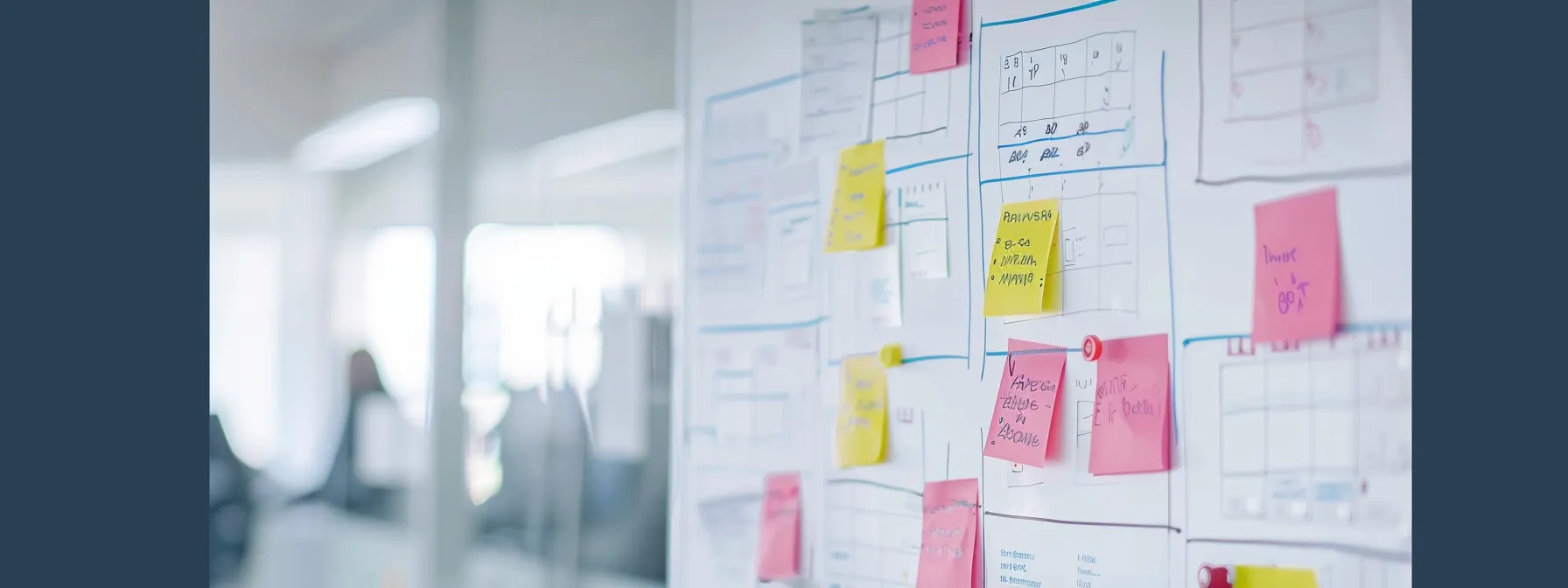Mindset Shifts for Better Time Management
Managing your time effectively is not just about filling your calendar; it’s about making strategic shifts that can enhance your productivity and reduce stress. With the principles of “Thinking Into Results,” you can embrace the necessary changes that come with personal development, allowing you to identify the risks that can derail your focus and aspirations. As you explore the mindset shifts that lead to better time management, you’ll uncover valuable strategies to enhance your daily routine and achieve your goals. Keep reading to discover practical tips that will empower you to take control of your time and reach new heights!
Key Takeaways
- Embrace flexibility in your time management to enhance resilience and adaptability
- Prioritize tasks based on their importance rather than their urgency for effective productivity
- Regularly reflect on your scheduling practices to identify areas for continuous improvement
- Set clear boundaries to protect your time and maintain focus on essential commitments
- Implement strategic breaks to recharge and boost cognitive performance throughout your workday
Embracing Flexibility Over Perfection in Scheduling

Embracing flexibility is crucial in your journey toward better time management because the truth is, not every day will unfold as planned. As you navigate through your daily tasks, fear of falling behind can create a rigid behavior that hinders your progress. Instead, allow yourself to adapt and swiftly reprioritize tasks based on what truly needs your attention. You’ll find that understanding the difference between urgent and important tasks creates clarity and helps in making informed decisions. Remember, it’s perfectly acceptable to forgive yourself for straying from your original plans; this practice fosters a mindset conducive to learning and growth, ensuring you remain resilient in the face of unexpected changes.
Accepting That Not Every Day Will Go as Planned
In your pursuit of improved time management, acknowledge that circumstances may shift unexpectedly. Each day can bring new challenges, whether it’s an urgent meeting, a change in your schedule, or an unplanned meal engagement. This acceptance will strengthen your motivation and enable your mind to adapt, rather than cling to unyielding perfection Thinking Into Results.
Learning to Adapt and Reprioritize Tasks Swiftly
To improve your time management, fostering a mindset that embraces change is vital for both individual growth and organizational effectiveness. As a leader, your ability to adapt and swiftly reprioritize tasks can prevent potential injuries to your productivity and morale. With this proactive approach, you create a resilient environment where both you and your team can thrive, even during unexpected challenges:
- Acknowledge the necessity for flexibility in daily planning.
- Assess tasks based on their urgency and importance.
- Communicate changes effectively with your team.
- Encourage a culture of adaptability among team members.
- Regularly reflect on outcomes to enhance future decision-making.
Understanding the Difference Between Urgent and Important Tasks
Understanding the difference between urgent and important tasks is a vital tip in shifting your approach to time management. Focus on identifying which tasks contribute significantly to your long-term goals, rather than merely reacting to what seems pressing at the moment. By prioritizing effectively, you enhance your productivity and ensure that your efforts align with your key objectives.
The Role of Forgiveness When Deviating From the Plan
Forgiveness is an essential concept when tasks don’t unfold as initially planned. Engaging in an internal conversation that allows for acceptance can significantly shift your energy away from frustration and toward constructive reflection. This skill not only helps you to recover more swiftly from setbacks but also encourages you to approach future tasks with a renewed mindset, acknowledging that deviations are part of the process.
As you let go of the need for a flawless schedule, a new perspective emerges: understanding the true value of what you prioritize. Shifting your focus to tasks that hold significance will transform your productivity and propel you forward.
Prioritizing Tasks Based on Value, Not Just Urgency

Focusing on value rather than urgency can significantly transform how you manage your time and energy. Identifying high-impact tasks that align with your long-term goals shifts your attention from merely reacting to immediate demands to taking deliberate actions that foster your growth. Use techniques that allow you to evaluate the importance of tasks in terms of their contributions to your objectives, while considering their emotional toll on your mental health. By setting daily priorities that align with your weekly goals, you build a structured approach to productivity. Incorporating tools to visualize and track these priorities ensures that your efforts remain aligned with your aspirations, ultimately leading to more meaningful outcomes.
Identifying High-Impact Tasks for Long-Term Goals
To achieve your long-term goals, identifying high-impact tasks is essential. Focus on actions that contribute significantly to your overarching objectives rather than those that demand immediate attention. This approach reduces the risk of injury to your progress, enabling you to commit to innovation that propels you forward.
Evaluating tasks based on their contribution to your success ensures that your energy is directed toward activities that matter most. By making this shift, you encourage a strategic mindset that prioritizes sustainable growth and ongoing improvement, fostering a culture of innovation in your workflow.
Techniques for Evaluating Task Importance
To effectively evaluate task importance, begin by asking yourself how each task aligns with your long-term objectives. Consider the potential impact of completing that task versus the consequences of postponing it; this will help you make informed decisions. Additionally, reflect on the time and energy required for each task, ensuring that your focus remains on those that cultivate growth and progress.
Setting Daily Priorities in Alignment With Weekly Goals
To set daily priorities in alignment with your weekly goals, begin by reflecting on what truly matters this week. Identify tasks that propel you toward your larger objectives, ensuring each day advances your progress. This intentional approach transforms your to-do list into a strategic plan that enhances focus and fosters accomplishment.
Using Tools to Visualize and Track Priorities
Utilizing tools to visualize and track your priorities empowers you to maintain focus on what truly matters. Whether you opt for digital apps or traditional planners, these resources help you see your tasks and deadlines at a glance, facilitating better decision-making. By consistently updating and consulting your chosen tools, you solidify your commitment to your goals and enhance your overall time management effectiveness.
Mastering the art of prioritization opens the door to a more fulfilling life. But to truly protect your time, you must embrace the empowering practice of saying no.
The Power of Saying No to Protect Your Time

Understanding your capacity and limits plays a vital role in effective time management. When you evaluate requests through the lens of your aligned priorities, you empower yourself to make choices that reflect your values and goals. Learning strategies to decline requests respectfully allows you to maintain boundaries while still considering the needs of others. Balancing your willingness to help with your personal time management ensures that you protect your essential tasks without compromising your integrity or relationships. This shift in mindset not only enhances your productivity but also fosters a healthier approach to managing your commitments.
Understanding Your Capacity and Limits
Recognizing your capacity and limits is crucial for effective time management, as it allows you to prioritize commitments that truly matter. When you acknowledge how much you can realistically handle, you’re less likely to overcommit yourself, which can lead to overwhelm and decreased productivity. Implementing this awareness empowers you to protect your time and focus on tasks that align with your goals.
Evaluating Requests Based on Aligned Priorities
When evaluating requests, consider their alignment with your priorities to make choices that support your goals. Ask yourself whether accepting the request advances your objectives or simply adds to your workload. This mindful approach enables you to make decisions that protect your time and maintain your focus on what truly matters.
Strategies for Declining Requests Respectfully
When you find yourself facing a request that doesn’t align with your priorities, it’s essential to communicate assertively yet politely. Acknowledge the person’s need while clearly expressing your current commitments. This shows respect for their request while also reinforcing your boundaries, making it easier to maintain your focus on your essential tasks.
Use phrases that emphasize your appreciation for the opportunity but clarify your limitations. For example, expressing gratitude for being considered and stating that you have prior commitments can effectively convey your unavailability. This approach not only fosters understanding but also preserves your relationships while ensuring you stay true to your goals.
Practice makes perfect; the more you rehearse these conversations, the more comfortable you’ll feel. Confidence in your ability to say no can empower you to defend your time without guilt. By prioritizing your responsibilities while being respectful, you enhance both your productivity and interpersonal connections.
Balancing Help to Others With Personal Time Management
Finding the right balance between helping others and managing your personal time requires self-awareness and intentionality. You must assess your current commitments and recognize when to step back, ensuring that your contributions do not compromise your primary responsibilities. By establishing clear boundaries, you can offer support without sacrificing your objectives, ultimately leading to greater satisfaction in both your endeavors and relationships.
By setting boundaries with your time, you create space for what truly matters. Now, let’s reimagine how you approach multitasking to amplify your productivity.
Transforming the Approach to Multitasking

Understanding the limitations of multitasking can significantly enhance your productivity. Often perceived as a skill, multitasking can actually diminish the quality of your work and hamper your ability to focus. By concentrating on one task at a time, you can deliver higher standards and improve your efficiency. Conditioning your mind for deep work is essential; it involves training yourself to enter a flow state where distractions fade away. Creating a distraction-free work environment further supports this effort, enabling you to immerse yourself completely in your tasks. Embracing these principles allows you to shift your mindset and cultivate a more productive approach to your daily activities.
The Myth of Multitasking and Its Impact on Productivity
The belief in multitasking as an efficient method can be misleading and often counterproductive. When you attempt to tackle multiple tasks simultaneously, your brain struggles to switch between priorities, resulting in decreased overall focus and quality of work. By committing to single-tasking, you sharpen your concentration, enhance the caliber of your output, and foster a more fulfilling work experience.
Focusing on Single-Tasking for Quality Work
Focusing on single-tasking allows you to elevate the quality of your work significantly. When you concentrate your efforts on one task at a time, you enhance your attention to detail and creativity, ultimately producing results that align with your standards. This approach not only fosters a sense of accomplishment but also builds your capability for deep work, empowering you to tackle challenges with clarity and purpose.
How to Condition Your Mind for Deep Work
To effectively condition your mind for deep work, start by establishing clear boundaries during your work sessions. Designate specific blocks of time for focused work and eliminate distractions by silencing notifications and creating an organized workspace. This intentional environment signals to your brain that it’s time to concentrate, enabling you to immerse yourself fully in the task at hand.
Incorporate rituals that prepare your mind for deep engagement, such as brief meditation or breathing exercises before diving into complex tasks. These practices help clear mental clutter, enhancing your ability to concentrate and perform at your best. With consistent application, you’ll train your mind to recognize when it’s time to shift into a productive state, leading to improved efficiency and satisfaction in your work.
Setting Up a Distraction-Free Work Environment
Creating a distraction-free work environment is pivotal for enhancing your focus and productivity. Start by decluttering your workspace, ensuring that only essential items and tools reside within your immediate reach, thereby minimizing visual distractions. Additionally, consider employing noise-canceling headphones or playing soft instrumental music to block out background noise, allowing your mind to engage deeply with the task at hand.
Multitasking can often lead to mental fatigue and diminished productivity. To maintain sharp focus, it’s essential to incorporate regular breaks into your routine.
The Importance of Regular Breaks for Sustained Focus

Recognizing the value of regular breaks can transform your time management strategy and enhance your overall productivity. Scientific research highlights the effectiveness of work-break cycles, illustrating how these intervals can optimize focus and mental stamina. By implementing effective break habits, you not only recharge your mind but also give yourself the opportunity to refocus your energy on challenging tasks ahead. Different types of breaks serve distinct benefits, whether it’s a quick stretch, a short walk, or a mindful pause. Each option has the potential to support your cognitive functions and improve decision-making. By leveraging breaks strategically, you can convert what may seem like interruptions into powerful tools for boosting your efficiency and achieving your objectives.
The Science Behind Work-Break Cycles
Research shows that incorporating regular breaks into your work routine enhances focus and productivity. These pauses allow your mind to reset, reducing mental fatigue and improving overall efficiency. By adopting structured work-break cycles, you can experience sustained attention on tasks and elevate your cognitive function throughout the day.
Consider the following breakdown of the benefits of various types of breaks for your productivity:
Implementing Effective Break Habits
To implement effective break habits, start by scheduling regular intervals throughout your workday, ensuring you step away from your tasks at predetermined times. During these breaks, engage in activities that help you recharge, such as taking a short walk or practicing deep breathing exercises, allowing your mind to reset. By establishing this routine, you enhance your overall productivity, making it easier to maintain focus and tackle challenges more effectively when you return to your work.
Different Types of Breaks and Their Benefits
Integrating different types of breaks into your work routine can profoundly enhance your cognitive performance. For instance, a movement break revitalizes your energy by increasing blood circulation, allowing you to return to tasks with renewed vigor. Meanwhile, a mindful pause helps clear your mind and reduces stress, fostering clarity that promotes better decision-making during your focused work sessions.
Using Breaks as a Tool for Time Management Improvement
Utilizing breaks strategically transforms your time management approach by allowing you to recalibrate and regain focus. When you take scheduled breaks, you combat mental fatigue and stimulate fresh thinking, which leads to greater efficiency in completing tasks. This conscious practice not only enhances your overall productivity but also empowers you to tackle projects with renewed vigor and clarity.
Taking regular breaks energizes your mind, paving the way for deeper insights. With renewed focus, it’s time to reflect and adjust—essential steps on the journey to continuous improvement.
Reflecting and Adjusting: The Key to Continuous Improvement

Creating a process for regular reflection and adjustment in your time management practices fosters a culture of continuous improvement. By establishing a consistent review routine for your schedule, you gain valuable insights into which strategies effectively drive your productivity and which need reevaluation. Analyze your recent tasks and commitments to identify patterns of success or areas for challenge. From this analysis, you can make informed adjustments tailored to enhance performance outcomes. Additionally, leveraging feedback—either from yourself or your team—allows for ongoing optimization of your time management techniques, ensuring that you not only stay on track but also evolve your approach as needed.
Establishing a Regular Review Routine for Your Schedule
Establish a regular review routine for your schedule to gain clarity on your progress and make necessary adjustments. By setting aside dedicated time each week to evaluate what worked and what didn’t, you can refine your approach and stay aligned with your goals. This ongoing practice cultivates an environment of growth and ensures that you remain proactive in managing your time effectively.
Incorporate this routine into your schedule seamlessly, treating it as a critical component of your time management strategy. By doing so, you will harness valuable insights and remain committed to continuous improvement in your productivity.
Analyzing What Worked and What Didn’t
To improve your time management strategies, take a moment to reflect on your recent experiences. Identify specific tasks or methods that yielded positive outcomes and consider what contributed to their success. Equally, pinpoint areas where you faced challenges to understand how different approaches could enhance your effectiveness moving forward.
Making Adjustments Based on Performance and Outcomes
To enhance your time management skills, proactively assess your performance and outcomes regularly. By analyzing what worked and what didn’t, you can identify effective strategies and areas needing improvement. This ongoing evaluation allows you to pivot as necessary, ensuring that you adapt your approach to better align with your goals.
Here’s how to approach this adjustment process:
- Review your recent tasks and pinpoint those that yielded the best results.
- Consider the methods and strategies used during successful tasks.
- Identify challenges faced in areas where outcomes fell short.
- Adjust your strategies based on insights gained for future tasks.
- Set measurable goals that incorporate these adjustments to track your progress.
Leveraging Feedback for Time Management Optimization
Actively seeking feedback on your time management practices provides invaluable insights that drive your continuous improvement. When you engage with colleagues or mentors, you open yourself up to different perspectives that can highlight areas for growth or reinforce effective strategies. Use this feedback to refine your approach, making informed adjustments that align with your personal goals and enhance your overall productivity.



